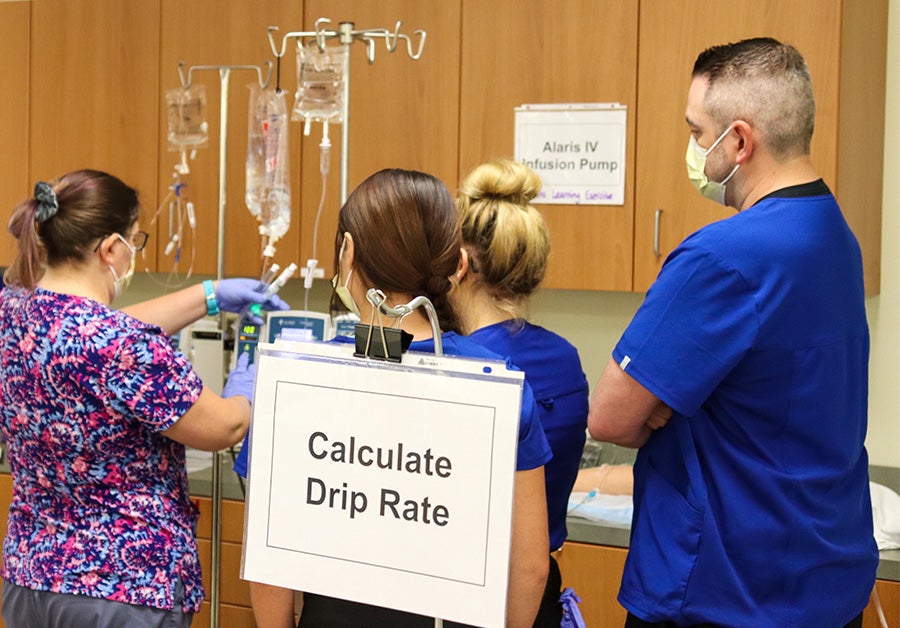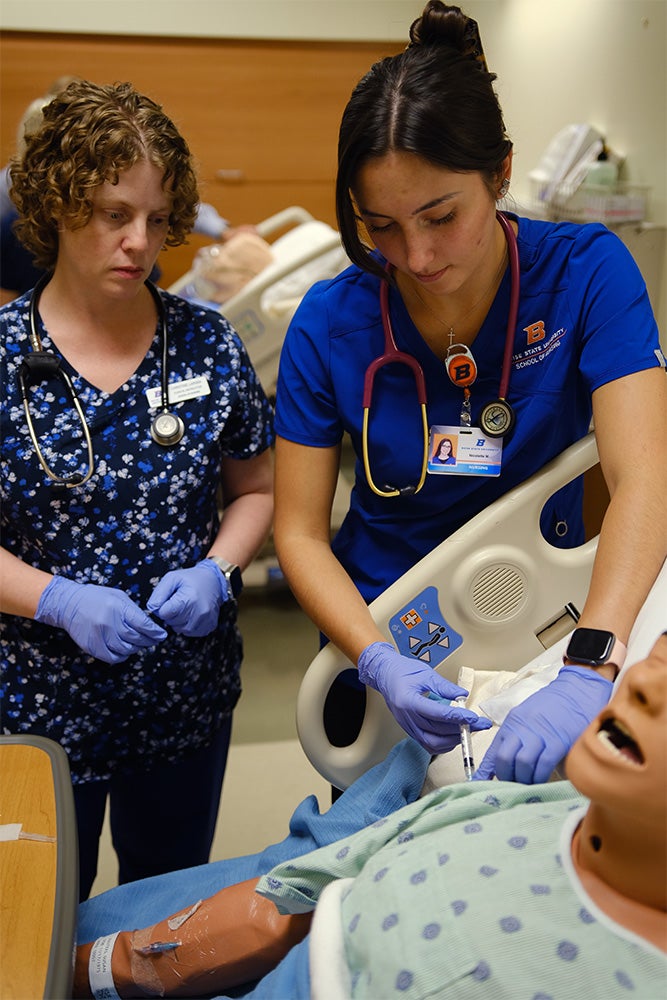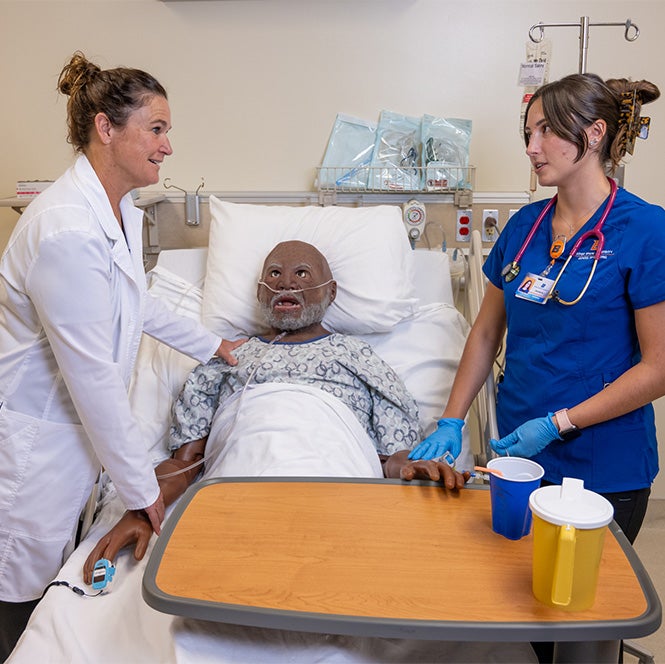Revamping curriculum is no small feat. A team of faculty recently worked tirelessly to evaluate existing pre-license nursing coursework and modify it to reflect new standards necessary for upholding accreditation.
Sound like a snooze? Here are three reasons it’s not:
1. Updated curriculum means modern education
Updated curriculum means students will get the most relevant education so they’re equipped as best as possible for the modern workplace. As the field of nursing adapts over time, education must reflect modern changes.
In spring 2021, the American Association of Colleges of Nursing (AACN) adapted its core competencies. These are considered the “Essentials” of what baccalaureate-level and advanced practice nurses absolutely need to know. The organization focused new efforts on competency-based education, so the school went to work modifying course objectives, names and designs to reflect these standards.

Assistant professor Sarah Llewellyn worked with associate professor Paula Molina-Shaver and assistant professor Veronica McDuffee to spearhead the curriculum revamp. Once the big picture curriculum elements were in place, the faculty team brought them to Director of Simulation-Based Education and Research Kelley Connor and the Simulation Center team for implementation in simulation scenarios and skills labs.
“We didn’t have to do a full overhaul in order to get what we think is going to match not only our current healthcare partners, but what the industry as a whole is starting to ask of graduates,” said Llewellyn. In both curriculum revision and implementation, Boise State is “ahead of the curve,” as Llewellyn put it.
The AACN released a statement in May saying they expect the Essentials to take three years to fully implement. Boise State will hit the mark in two-and-a-half.
2. Competency-based education equips top-notch nurses
Competency-based education removes the “one-and-done” practice mentality. This is the idea that a student learns a task or skill in one session and now has complete understanding and full capability. Instead, the new curriculum builds students’ competency through a scaffolded approach.

Students at Boise State will encounter core nursing concepts multiple times throughout their education, strengthening their skills over time and repetition in order to build confidence and reinforce positive habits.
The school shaped its curriculum around a foundation of several core competencies, determining what concepts are essential for base-level nursing skills and wide application no matter where students find jobs. Concepts include oxygenation, mobility, safe medication administration, elimination and sterility.
“When they graduate, they should be very comfortable with those skills,” said Connor.
Although they will repetitively address the same concepts each semester, how students apply them will continually evolve. As students progress in their knowledge and hands-on abilities, their simulation scenarios will grow more complex to match their competency level.
3. Innovation sets up future success
Many of the undergraduate program’s existing courses only needed minor adjustments so the learning outcomes reflect competency-based education. Other new courses were designed from scratch with the idea of educating students not just in basic nursing skills alone, but with a holistic understanding of the nursing industry. The goal is to equip students with the resources and knowledge to thrive in their future careers.
On-the-job knowledge
The new Healthcare Technology and Informatics class helps students understand why they do what they do – such as detailed electronic charting – and how even the data collected as a bedside nurse might impact a statewide or national population of patients. The curriculum continues to meet the needs of clinical partners and the industry as a whole, training students to be confident in their knowledge of hospital systems and in using electronic records.
A new innovations course also empowers students, incorporating guest speakers and a design thinking project to show them how nurses can innovate and make a difference. The course teaches students a framework to use creativity to solve problems, whether that be in a unit at a hospital or on an international scale.

The course will also reveal what other advanced practice roles are available for students in their careers. For example, if students work on a hospital unit-based project for the course, they will inevitably learn about the hospital’s quality improvement nurse officer. Llewellyn explained that exposure to roles beyond the bedside can help students realize their options and identify possible paths to reach those positions.
“We’re trying not to give them too much information that they’re overwhelmed, but enough that they can see their future and have the options that they might want,” she said.
Speaking of post-graduation…
The new curriculum also prepares students for success in their careers by having them maintain a digital professional portfolio. As they progress through the program, they’ll add assignments and then, as part of their capstone reflection, look back and assess how they’ve progressed.
From graduate school to job applications, the portfolio will help students learn to keep track of their growing professional identity.
“It’s a good way to capture continuing education and professional growth,” said Llewellyn.
Ultimately, the hours of work faculty put into revamping the undergraduate curriculum ensures Bronco Nurse graduates are more prepared than ever to enter the workforce as confident, competent nurses.